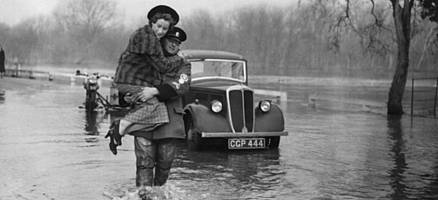Winter Time Driving
09 December 2014
December is finally here and it’s only a matter of time now before the frost really sets in and snow blankets the UK. Which is all very well for those of us that can stay tucked up inside, but how confident are you when it comes to venturing out in the car in such unpredictable conditions? We’ve put together a few tips to help you tackle the treacherous elements this winter...
Driving in Ice
Ice is one of the most dangerous and unpredictable of all the elements when it comes to driving. Black ice can be a nightmare as it’s virtually invisible and as a result many motorists don’t realise and therefore don’t adjust their speeds as a result.
- Only venture out if you feel the journey is absolutely necessary. If driving does prove to be difficult, turn back or leave your car in a safe place and turn back on foot.
- Make sure all your windows are completely clear before you set off on your journey.
- Leave up to ten times the normal gap between your car and the vehicle in front. Ice can make cars move in all sorts of unpredictable directions and at unpredictable speeds.
- If you feel your car beginning to skid, try to steer into it gently e.g. if the rear of the car slides to the right, steer to the right. Don’t press the brakes and don’t take your hands off the steering wheel.
- Operate the brakes, accelerator and even the steering wheel very slowly and cautiously.
- A higher gear may be better to aid tyre grip if driving on packed ice.
Driving in Snow
Many motorists consider winter tyres for seasonal use, but there’s much more in the way of preparation you can bear in mind when driving in the snow. Make sure you leave more time for your journey, remove all snow from your car before setting off and make sure you prepare for every eventuality. A shovel, scraper, blanket, phone charger, water torch and snacks are just some of the items recommended to have in your car during the winter months.
- When you eventually do hit the road, make sure you accelerate gently and use low revs.
- Drive in as high a gear as possible – you might need to pull off in second gear to avoid wheel slip.
- Steer into a skid gently e.g. if the rear of the car slides to the left, steer to the left. As per driving on ice, don’t brake or take your hands off the steering wheel.
- Leave a much bigger gap in between you and the vehicle in front.
- If the road has not been gritted, be wary of driving in other wheel tracks as compressed snow can be very slippery.
- Keep your speed low and give plenty of time for stopping and steering.
- A pair of sunglasses can sometimes be necessary in the bright glare of a very snowy road.
Driving in Heavy Rain and Flooding
Many wet weather accidents and flood related car breakdowns car be easily avoided. Cars are not fully waterproof and deep water can cause multiple problems. Many insurance companies will not foot the bill of engine flooding if drivers have not been sensible in their driving decisions.
- Plan your journey in good time and in advance. Avoid areas that are likely to be flooded and if the forecast predicts more rain before or during your journey, make sure you choose the most sensible route, even if it takes you more time.
- Use dipped headlights so other drivers can see you. Heavy rain in daylight hours can impair vision drastically. Don’t use fog lights as they can mask your brake lights and even daze drivers behind you.
- Remember the two second rule – make sure you leave plenty of space between you and the car in front.
- Watch out for large or fast moving vehicles which will cause large amounts of spray. Don’t sit behind such a vehicle for long periods as your visibility will be impaired for no reason.
- If you break down in the rain, avoid opening the bonnet. You don’t want any electrics to get wet.
- Don’t drive through large bodies of standing water, you don’t know how deep they will be and such a decision could be a big regret. Find another route and avoid the risk.
- Avoid driving too fast through standing water. Your tyres are likely to lose contact with the road. If your steering feels slight then you could be aquaplaning. Gain control again by easing off the accelerator to reduce speed until you feel in control again.
Stay safe and drive sensibly this winter. If you have any concerns over the effects of the elements on your car this winter, find your nearest Setyres branch, and call our friendly staff with any concerns you might have.
* Image: Advice from the AA Flood and Rescue Team